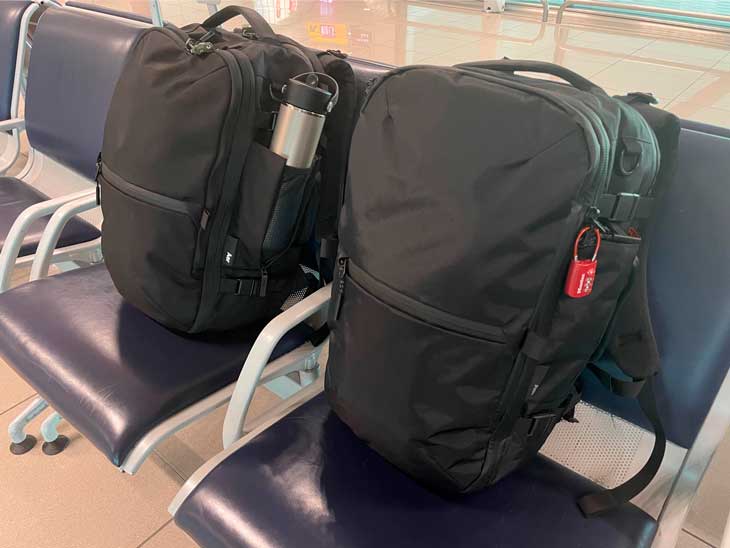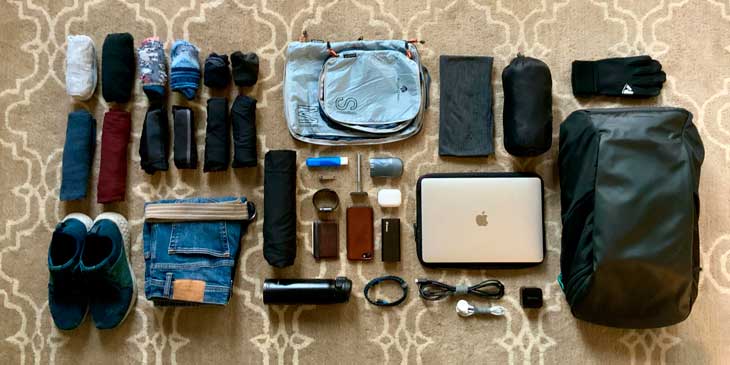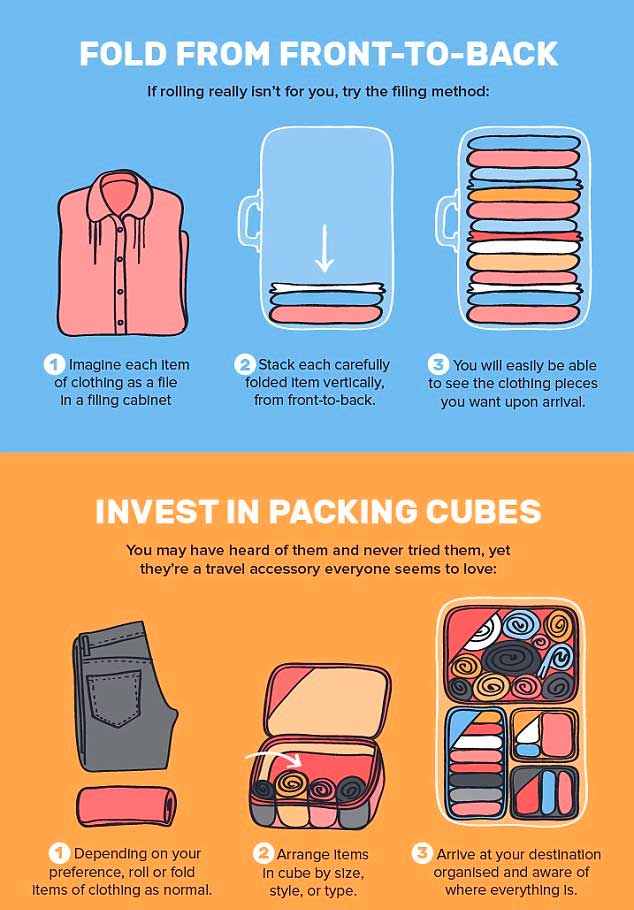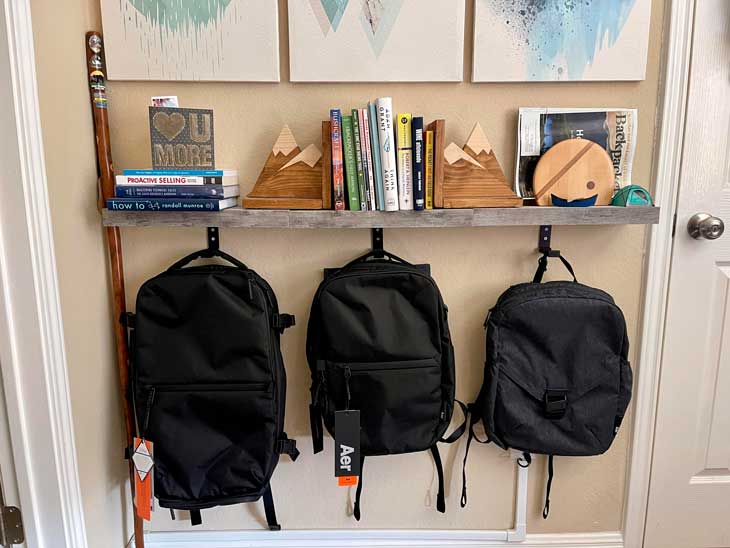Effectively utilizing the expansive and adaptable interior of a duffel bag can be a bit challenging since there are no built-in rigid divisions or separate compartments.
You will need to establish your own organization system and place sturdy items along the edges to provide support, while delicate items should be shielded in the central area.
Construct layers and pockets using the items you pack, and do not hesitate to rearrange the contents until they fit snugly and efficiently.
Selecting the Right Duffel Bag

Selecting the right duffel bag for your trip needs is essential before starting the organizing process. Aspects including the bag's size, capacity, material, durability, and the presence of compartments and pockets should be taken into consideration.
Choosing a duffel bag with several compartments will make it much easier to organize your belongings. Furthermore, prioritize a bag that is both lightweight and robust, guaranteeing its ability to endure the demands of travel.
Make a Packing Checklist
Crafting a packing checklist stands as a crucial step to safeguard against forgetting any vital items. Commence by cataloging the absolute necessities encompassing clothing, toiletries, electronic devices, and essential travel documents.
Subsequently, arrange these items in order of importance and their frequency of use during your journey, and categorize them into distinct groups such as clothing, accessories, and gadgets.
This comprehensive checklist will function as your trusted companion throughout the packing endeavor, aiding in maintaining organization and averting the pitfalls of overpacking.
Pack Only What You Need

Create a comprehensive checklist and methodically mark items as you pack them to maintain a clear inventory of what you have and have not included.
Divide your list into categories such as clothing, electronics, food, toiletries, documents, and equipment. Factor in the anticipated weather, trip duration, and the range of activities you will engage in.
Strive to ensure preparedness for foreseeable situations, but exercise caution against overpacking. For outdoor excursions, draft lists for both gear and clothing.
If you are attending a sleep-away camp, use their provided packing list as your guide to avoid overlooking essential items. When it is time to return home, keep in mind that in populated areas, you can usually purchase items you may have forgotten.
However, when heading to remote or less populated areas, focus on securing the absolute necessities, nevertheless maintaining perspective regarding the actual quantity of items you genuinely require.
Utilize Packing Cubes and Compression Bags
Packing cubes and compression bags stand as invaluable aids for optimizing space and maintaining orderliness in your luggage.
Packing cubes enable you to categorize your belongings or even organize outfits, simplifying the task of locating specific items without the need to rummage through your entire bag.
Compression bags, on the other hand, prove perfect for condensing the size of bulkier items like sweaters or jackets. Just insert the items into the bag, seal it, and compress to remove excess air.
This not only conserves space but also ensures your clothing remains neatly packed and minimizes the risk of wrinkles.
Roll or Fold Clothing Efficiently

When it comes to packing your clothing, the choice of folding or rolling technique can make a notable difference in the space you conserve.
Rolling your clothes is a widely favored method, as it not only minimizes wrinkles but also facilitates improved organization. Begin by folding your clothes lengthwise and then tightly rolling them.
This approach not only maximizes space but also simplifies the process of locating specific items. However, for delicate fabrics or dressier attire where avoiding creases is crucial, folding may be the more suitable choice.
Ensure that you fold these garments meticulously and stack them in your duffel bag, with heavier items placed at the bottom to prevent wrinkles.
Pack Smaller Items Strategically
When it comes to packing smaller items like toiletries, electronics, and accessories, a thoughtful approach is essential. Employ smaller pouches or zippered sections within your duffel bag to keep these items separated and readily accessible.
For your toiletries, consider using a waterproof bag to safeguard against leaks and spills. To prevent tangles, allocate a dedicated compartment for electronic devices, chargers, and cables.
Furthermore, contemplate acquiring a travel organizer or a compact bag with numerous pockets to ensure the organization and protection of your accessories, including jewelry, sunglasses, and watches.
Repack When Necessary
Throughout your journey, it is common for your possessions to become disorganized and wrinkled due to the daily demands of living out of a duffel bag.
Occasionally, you may need to access heavy items situated at the bag's bottom, potentially disrupting the carefully layered arrangement of your clothing and travel essentials. In such instances, do not hesitate to remove everything from your bag and reorganize it.
This task is quick, and it safeguards your belongings from the wear and tear of travel. Consider making it a routine to unpack your bag each evening upon reaching your lodging, then take a few minutes in the morning to thoughtfully repack the bag before departing.
This approach ensures that the most crucial items for each day remain conveniently accessible at the top of your bag.
Bring a Day Pack for Day Trips

If you plan to stay in one place and embark on day trips during your travels, it is prudent to bring a smaller bag to avoid lugging your duffel everywhere you go.
You can conveniently tuck this day pack into your duffel each day, leave your large duffel bag at your lodging, and fill the day pack with only the essentials you will need.
The day pack can also serve as a distinct modular compartment within the main duffel compartment. You can store toiletries, electronics, or food in the day pack to keep these items separated from the rest of your duffel contents.
For easier packing, it’s advisable for the day pack to have a flexible, amorphous structure rather than a rigid one. This way, you can pack the day bag within and around your other belongings without taking up too much space in your duffel.
Mastering the art of organizing a duffel bag for your travels can significantly elevate your overall travel experience.
By carefully choosing the appropriate duffel bag, crafting a meticulous packing checklist, leveraging packing cubes and compression bags, implementing efficient folding or rolling methods for your clothing, and tactically arranging smaller items, you can optimize space, minimize wrinkles, and effortlessly find your belongings.
Keep in mind that by saving time and lowering stress, having a well-organized duffel bag enables you to enjoy and fully immerse yourself in your vacation. With these methods at your disposal, you might travel with confidence and ease on your upcoming trip.